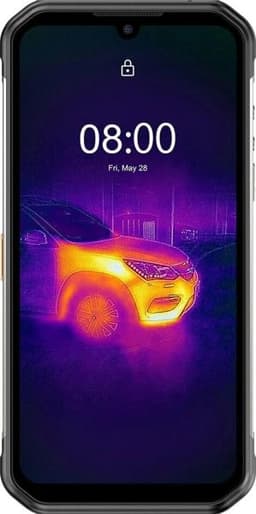- Archive
- Ulefone Armor 11T vs vivo Y17s
Ulefone Armor 11Tvsvivo Y17s
We compare these two popular phones to help you decide which one fits your needs and budget better.

Quick Stats

Quick Stats
Note: Highlighted specifications show differences between the two devices.
| Metric | Ulefone Armor 11T | vivo Y17s |
|---|---|---|
| Connectivity | #484 Winner | #792 |
| Design | #376 Winner | #669 |
| Display | #811 Winner | #815 |
| Performance | #548 Winner | #706 |
| Battery | #660 Winner | #792 |
| Camera | #420 Winner | #642 |
Note: Lower rank number indicates a better position in category.
No significant specification differences found between these devices.
Ulefone Armor 11T
Strengths
Weaknesses
vivo Y17s
Strengths
Weaknesses
Ulefone Armor 11T
As a software engineer, father, and tech enthusiast, I was excited to try the Ulefone Armor 11T, a rugged phone that caught my attention due to its FLIR camera and flagship-level specifications. After two months of daily use, I'm sharing my thoughts on this device. The phone's solid build quality is impressive, but it's also quite heavy and thick. The FLIR camera is a useful tool for everyday tasks, revealing temperature differences in various objects. However, the image quality is poor, especially in low light conditions. Despite its 48-megapixel main camera, the photos I took were not up to par. I was disappointed to find that the phone's 5G connectivity didn't work on my device, despite having a 5G data plan and testing it in areas with good coverage. The battery life is excellent, lasting two days or more with heavy use. However, the phone's durability was another letdown - after only two drops, the outer edges were damaged. The camera focus issues were particularly frustrating, especially when using the app for grocery shopping. Compared to my old iPhone SE, scanning barcodes took 10 times longer. As someone who has primarily used iPhones over the past 13 years, I missed the seamless experience of iOS on this Android device. While the user interface has improved significantly since my last Android experience in 2010, I still found myself wanting an iPhone. In conclusion, if you're specifically looking for a rugged phone and know what to expect, the Ulefone Armor 11T might be suitable. However, if you're switching from a regular phone or seeking a similar experience, this device may not be the best choice. My final thoughts: proceed with caution, as the phone's durability and camera performance may not meet your expectations.
vivo Y17s
The Vivo Y17s is a budget phone that offers decent specifications for its price point. The device features 4GB of RAM and 128GB of storage, powered by the MediaTek Helio G85 chipset. One notable feature is the IP54 rating, making it suitable for everyday use in environments where exposure to dust or occasional splashes is a concern. The phone's display is an IPS LCD screen with a resolution of 720p and 7,000 nits peak brightness, which makes it readable under the sun. The body is made of plastic, but it feels sturdy despite the IP54 rating. However, the side fingerprint scanner has some issues, resulting in more misses than successful unlocks. In terms of gaming performance, the Y17s handled mobile games like PUBG Mobile and Call of Duty smoothly at default graphics settings. However, there were occasional lag and frame drops when playing Fortnite with medium and minimal graphic settings. The rear camera performed surprisingly well, with accurate focusing and decent quality photos even in challenging lighting conditions. However, night mode was necessary to take better photos, and the front-facing camera struggled with washed-out backgrounds and inconsistent lighting. Overall, the Vivo Y17s is a mixed bag. While it offers some impressive features for its price point, there are also some notable drawbacks that may deter potential buyers. If you're in the market for a budget phone, it's worth considering the competition to find a device that better meets your needs.
Need help choosing?
Read our detailed reviews to understand which device is better for your specific needs and budget.
Compare other phones
Explore comparisons between any other phones
Choose two different items to see a detailed comparison of their specifications, performance, and features